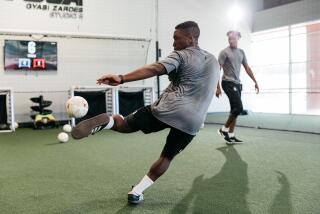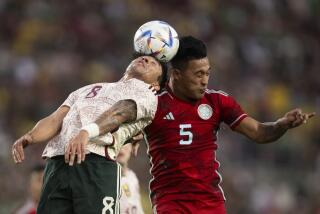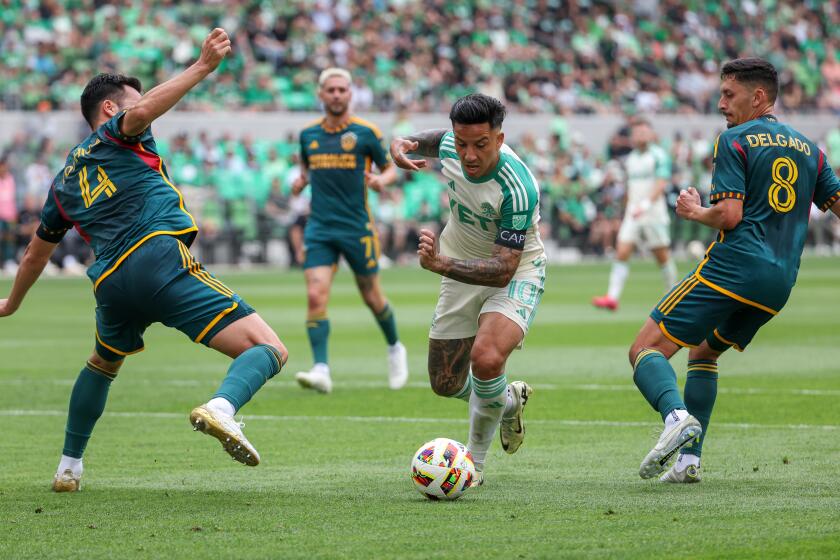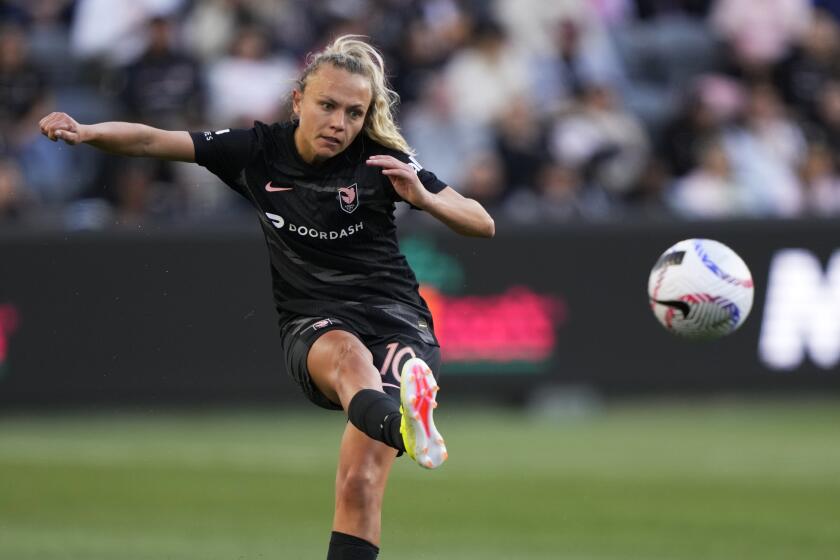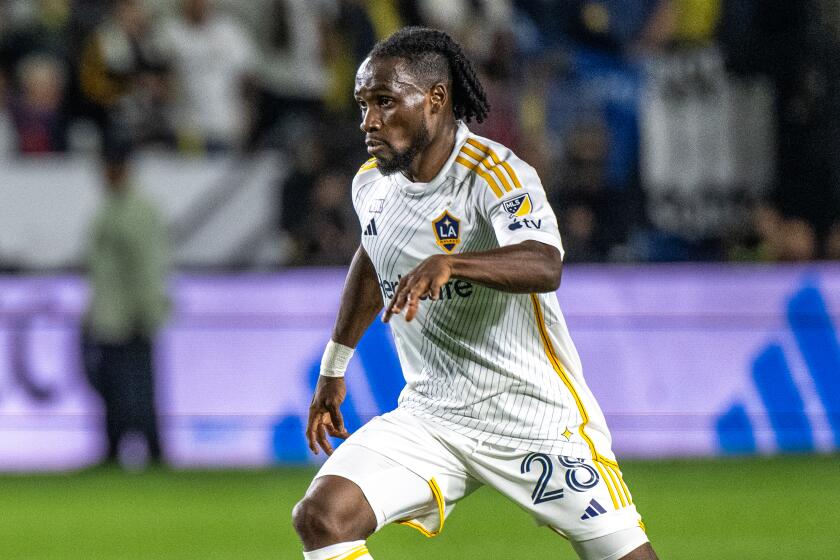Argentina’s World Cup postmortem must take Diego Maradona into account
The cream of South American soccer has curdled and, as a result, has been flushed down the World Cup drain.
Argentina and Brazil, which between them won four of the last eight tournaments and seven of 18 overall, have been ousted from South Africa 2010, both beaten by European teams.
What the Dutch did to the Brazilians on Friday in Port Elizabeth, the Germans did to the Argentines on Saturday in Cape Town, only in even more emphatic fashion.
So what went wrong?
Could it be a matter of two former World Cup winners, Diego Maradona of Argentina (class of ‘86) and Dunga of Brazil (class of ‘94), being outcoached, being tactically naive?
Were two former great players not up to snuff as coaches?
Quite possibly.
Maradona came into the tournament with a team loaded with offensive firepower but with a suspect defense. The fact that he left the vastly experienced Javier Zanetti and Esteban Cambiasso off his roster might have been his biggest mistake. Both players were in top form, having just won a trio of Italian and European titles with Inter Milan.
So, when central defender Walter Samuel, their Inter Milan teammate, came down with a hamstring injury, Argentina was left with no one to turn to when things went south on the back line.
Maradona also chose to pursue a dangerous course in the tournament as a whole, but one typical of a former attacking player. If opponents scored once, Argentina would score twice. If opponents scored twice, Argentina would score thrice.
On Saturday, the young and motivated Germans scored four times. Argentina had no answer to that. But even as the game was slipping away from the Albiceleste in the second half, Maradona dithered.
For the cameras, he looked suitably worried, suitably anxious, suitably studious. But he went to his bench only when his team already trailed, 2-0. Even then, it was merely to replace out-of-his-depth defender Nicolas Otamendi with midfielder Javier Pastore.
It was 3-0 by the time Maradona decided to change his strike force, and even then he opted to send his son-in-law, Sergio Aguero, into the match rather than the far more influential Diego Milito. There is nothing at all wrong with Aguero as a goal scorer, but Milito would have been a more dangerous threat to the German back line.
Maradona never even used his third substitute.
As for Dunga, his weakness was his stubborn nature. He declined to include such up-and-coming youngsters as Paulo Henrique Ganso and Neymar, both of Santos, in his squad, and perhaps that was understandable. Both are very young and neither had international experience.
But leaving the AC Milan duo of Ronaldinho and Alexandre Pato out of his 23-player squad was a far more questionable decision. Pato, with his speed and finishing touch, would have added depth to the forward line. Ronaldinho would have given Brazil something it lacked almost entirely — a little bit of magic, a little touch of the unexpected, something out of the ordinary.
Meanwhile, Ganso and Neymar on Saturday were reported to be heading for European clubs and no doubt will feature prominently in the new-look Brazil that will be built by Dunga’s successor.
Who that might be is not yet known, but there was some clamor for the return of Luis Felipe Scolari, the coach who led the Selecao to its 2002 World Cup triumph.
If so, his first game back in charge would be against the U.S. at the New Meadowlands Stadium in New Jersey on Aug. 10.
As for Argentina, there was no immediate word Saturday on whether Maradona would step down or be pushed out the door. He gave the World Cup some lively and controversial comments and his team gave the tournament some bright moments, but that will not be enough to satisfy his masters in Buenos Aires or the long-suffering Argentine public.
